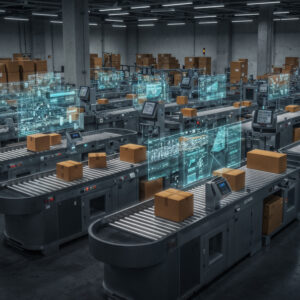It doesn’t seem as if you can ever count the vertical machining center (VMC) out when it comes to being the favorite workhorse of any shop, whether mold/die, aerospace, medical, or just plain hard-charging job shop. The iconic three-axis machine has morphed into the versatile platform for high-speed, high-precision five-axis machines capable of machining the most complex molds and dies, as well as the highest precision parts for the aerospace, energy, and medical device industries. VMCs are meeting precision manufacturing requirements through a combination of advanced technologies, including machine construction, the latest controls and CAM programming software, and cutting tool and toolholding technology that is delivering high performance in the most challenging applications.
Repeatability, Accuracy and Automated Control
Even though you use a CAM system, don’t overlook the multiple advancements in control technology that improve surface finish, increase productivity and accelerate machining time. CAM system is important, but how the machine tool’s control handles the part program matters. The most important specifications are RAM and processing speed. In addition to the technical specifications, there are numerous advancements in control technology that enhance the NC part program and machining process.
While measurement processes are stringent and well defined whether a builder uses the 10 Pass VDI-3441 method or JIS 6330, these specifications don’t take into account cutting and thermal loads. Probably the best tip in reference to repeatability and accuracy specifications is to ask for a customer reference as you get further along in the buying process or talk to an applications engineer. Repeatability specifications from a machine tool builder won’t replicate your exact conditions.
Tool center point management (TCPM): TCPM eliminates the need to account for the 5-axis machining center’s center lines of rotation. Instead, you simply program from part zero. This feature eliminates the need to go back to the CAM system and recalculate the center lines of rotation because the 5-axis tool motion is programmed in the workpiece coordinate system, independent of setup location in the machine.
Automatic safe repositioning (ASR): An addition of one G-Code tells the machine to retract along the vector and overrides the out of limits protocol. No stoppage. No error message. The software is smart enough to retract, move to Z0 along the X-limit, reorient the tool, move to retract plane, move above the plunge point and plunge to the target along the tool vector.
Toolpath linearization: This eliminates gouging of the workpiece and minimizes the loops (the line segments in the form of XYZBC or AC moves that a CAM system uses), which improves surface finish. Additionally, this feature significantly reduces the size of NC programs.
Okuma’s 5-Axis Auto Tuning System

Okuma has developed the 5-Axis Auto Tuning System to manage and compensate geometric error changes. 5-axis machines have 13 types of geometric error that greatly affect machining accuracy. Tuning for changing geometric error needs to be done on shop floors in order to maintain high accuracy in 5-axis machining. However, making adjustments by hand for the many types of geometric error takes time and effort, and even then accuracy is difficult to achieve because of the ease with which variability occurs.

Okuma’s 5-Axis Auto Tuning System uses a touch probe and datum sphere to measure up to 11 types of geometric error, then tunes the movement accuracy of the 5-axis machine with compensation control. This makes is easy for anyone to achieve a higher level of 5-axis machining accuracy.
5-Axis machining Technology from Mazak

5-axis machining provides infinite possibilities as to the part sizes and shapes you can effectively process. The term “5-axis” refers to the number of directions in which the cutting tool can move. On a 5-axis machining center, the cutting tool moves across the X, Y and Z linear axes as well as rotates on the A and B axes to approach the workpiece from any direction. In other words, you can process five sides of a part in a single setup.
Mazak’s simultaneous 5-axis technology raises the limits on the types of part geometries you can machine. By empowering you to produce highly complex components in a single setup, Mazak’s 5-axis machines unbridle the imaginations of your engineers and redefine your overall capabilities.

The VARIAXIS series, simultaneous 5-axis machining center, are designed for high-speed and high-accuracy machining of multiple-surface. The VORTEX series are designed to machine large, complex workpieces such as aerospace components thanks to the ±40 degree tilting/rotary spindle. The VERSATECH V series are designed to provide unsurpassed productivity in the machining of very large workpieces thanks to the spindle head that can position to the vertical and horizontal positions and any angle in between.





